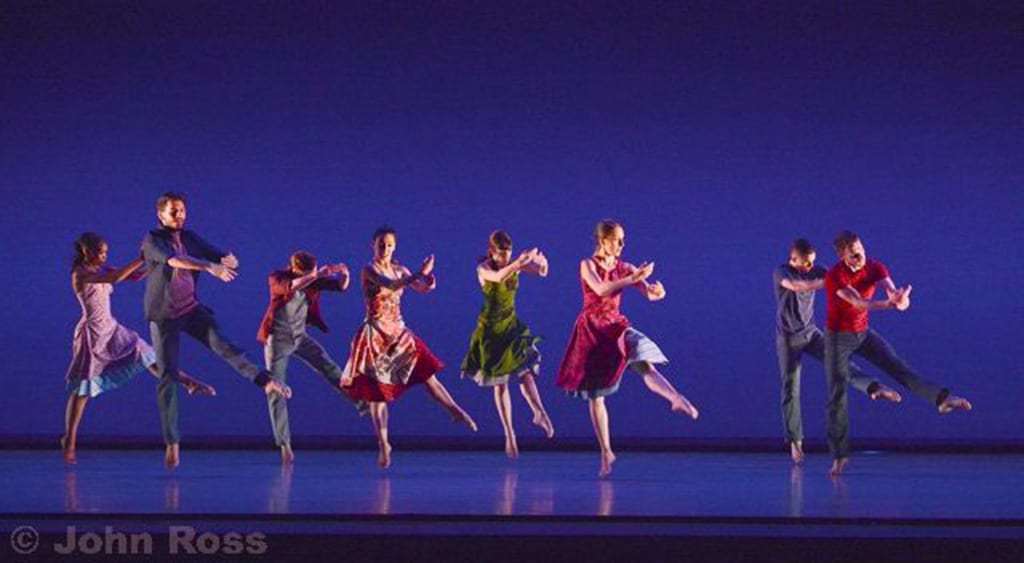When Richard Alston says he created the piece very quickly, it’s supposed to be a good sign. It means he was inspired. Inspired by the dancers, he says, inspired by these 12 young talents, all students of the Rambert School of Ballet and Contemporary Dance. A few seconds of silence and the complex Glint kicks off with a powerful modern duo, where instead of a complete fusion or a strong physical bond between the dancers, the couple simply switches from pose to pose always resting a hand on one another. Their geometrical coloured shirts, paired with shiny shorts reinforces the linear aspect of the choreography. Both music and movement are the opposite of fluid.
After a short break, four duos open the curtain again for Tangent, set to Astor Piazzolla’s Quatro Estaciones Porteños, before breaking into a single duo. The piano, placed on the left hand side of the stage, distracts the eye especially as some duos are performed in front of it. With the dancers barely looking at each other, the duos fail to bring emotion. No duo can be powerful without a certain complicity. As the season changes, the rhythm picks up for a double duo than slows down for a new single duo where the dancers are drawn further apart then closer together. After glancing at their opponents, each couple leaves the stage arm under arm. But with the lack of bonding between dancers and their partners, the acting is insignificant. The piano then becomes more dramatic infusing energy into the dancers. The piece ends with the four duos reuniting on a rapidly paced dramatic piano.
Male and female dancers return with burgundy dresses in a stunning third act: Chacony. The power and emotion that the performance as a whole was lacking suddenly strikes. Dancing both in unison and in canon, the choreography is beautiful and empowering to these young dancers. Carried away by the music, Gypsy Mixture, brings an energetic and stunning finale.

